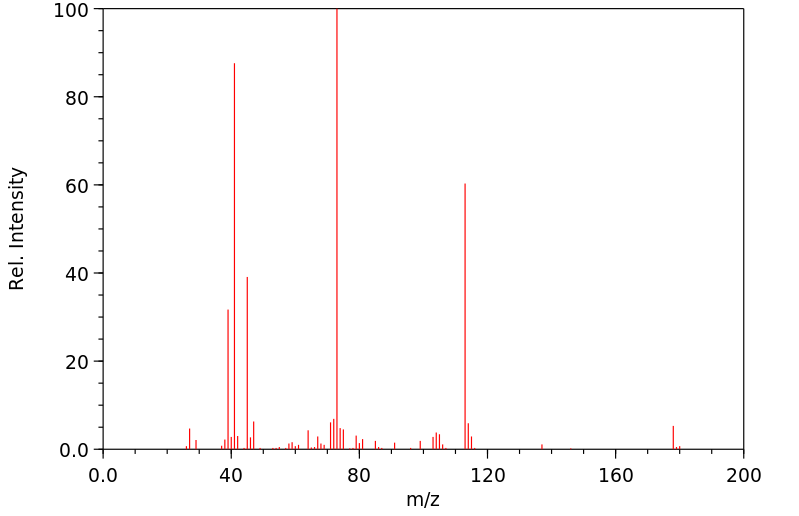毒理性
大蒜(Allium sativum)含有大蒜素,通过酶大蒜酶转化为大蒜素,被认为是大蒜具有药用价值和气味的主要原因。大蒜的气味在乳汁中归因于烯丙基甲基硫化物。大蒜被用来降低胆固醇和血压。在西方国家,大蒜在哺乳期间没有特定的适应症。在印度和土耳其,大蒜被用作催乳剂,尽管没有找到关于其单独作为催乳剂的科学研究数据。催乳剂永远不能替代影响乳汁产量的可改变因素的评估和建议。大蒜作为食物和药物有着悠久的历史,并被美国食品药品监督管理局(FDA)认为是“普遍认为安全”的食品调味料,包括在哺乳期间。大蒜的气味会传递到母乳中,这可能短暂增加婴儿吸吮时间,并可能长期增强母乳喂养婴儿的食物选择。据报道,土耳其的一些母亲使用大蒜来改善她们乳汁的味道和质量。有限的科学数据发现,口服大蒜补充剂几天对哺乳母亲或婴儿没有不良影响。当作为药物使用时,大蒜在成人中通常耐受性良好,但可能会出现胃肠道副作用以及口臭和体臭。大蒜具有抗血小板作用,有出血风险的妇女应谨慎使用。大蒜可能引起过敏反应,对大蒜或其他百合科植物如风信子、郁金香、洋葱、韭菜和大葱过敏的人应避免使用。大蒜的外用可能会导致皮炎和烧伤,特别是在婴儿中应谨慎使用。一位哺乳母亲因长时间(2天)使用生碎大蒜敷料治疗自诊为念珠菌感染而严重烧伤乳房。
膳食补充剂不需要美国食品药品监督管理局的广泛市场前批准。制造商负责确保产品的安全性,但在市场营销前不需要证明膳食补充剂的安全性和有效性。膳食补充剂可能含有多种成分,标签和实际成分或其含量之间常常存在差异。制造商可以与独立组织签订合同,以验证产品或其成分的质量,但这并不证明产品的安全或有效性。由于上述问题,一个产品的临床测试结果可能不适用于其他产品。关于膳食补充剂的更详细信息可以在LactMed网站的其它地方找到。
◉ 对哺乳婴儿的影响:母亲食用大蒜被认为会导致哺乳婴儿肠绞痛。两篇论文倾向于反驳这一说法。其中一项研究中,153位回答问卷的母亲中,那些食用了大蒜的母亲并不比那些没有食用大蒜的母亲更有可能报告她们的婴儿在过去一周内有肠绞痛。
在另一项研究中,母亲们以双盲方式每天一次服用1.5克大蒜或安慰剂胶囊,持续3天,然后询问她们在服用胶囊后婴儿是否表现出任何肠绞痛的迹象(更烦躁、哭得更多或更多气体)。在服用大蒜的20名女性中,有4人认为她们的婴儿有肠绞痛;然而,在服用安慰剂的10名女性中,有4人认为她们服用了大蒜并报告了婴儿的肠绞痛。
◉ 对哺乳和母乳的影响:40位在分娩后第5天抱怨母乳供应不足的母亲被给予一种组合草药补充剂,即每天3次服用2粒Lactare胶囊(Pharma Private Ltd.,印度马德拉斯)。每粒胶囊含有野生芦笋200毫克,印度人参(Withania somnifera)100毫克,葫芦巴50毫克,甘草50毫克,大蒜20毫克。在治疗的第4天,没有婴儿需要补充喂养。在母亲治疗的第5天,婴儿在每次喂养前后称重,以确定摄入的牛奶量。在测试称重的当天,婴儿的牛奶摄入量平均为388毫升,液体和卡路里的摄入量被认为是足够的。由于缺乏随机化、双盲、安慰剂对照以及母乳喂养技术的母亲指导,这项研究不能被视为这些草药催乳效果的有效证据。此外,婴儿每天只哺乳6到8次,这不足以最大化乳汁供应。
在由同一研究者进行的两项研究中,给哺乳母亲服用了含有1.5克大蒜提取物的胶囊(General Nutrition Center,宾夕法尼亚州匹兹堡)。在第一项实验中,8位母亲交叉服用大蒜胶囊或安慰剂,每天一次。那些母亲服用大蒜胶囊的大蒜未接触过的婴儿在大蒜摄入后1.5到3小时期间,当乳汁中的大蒜气味最大时,与那些母亲服用安慰剂的婴儿相比,附着在乳头上的时间更长(33分钟对27分钟);然而,两组之间的总哺乳次数或总摄入量没有差异。在一项随机对照试验中,哺乳母亲在测试前3天服用大蒜胶囊或安慰剂,然后像上面的研究一样服用单粒胶囊。首次在母乳中接触大蒜的婴儿在服用大蒜后的哺乳时间比服用安慰剂后增加了30%。那些之前在母乳中接触过大蒜的婴儿在随后的大蒜接触后并没有增加哺乳时间。作者将上述研究的结果解释为对婴儿后期食物选择有积极影响(即对食物不那么“挑剔”)。
◉ Summary of Use during Lactation:Garlic (Allium sativum) contains alliin, which is metabolized by the enzyme alliinase to allicin, thought to be responsible for most of garlic's medicinal properties and odor. Garlic’s odor in milk is attributed to allyl methyl sulfide. Garlic has been used to lower cholesterol and blood pressure. It has no specific indications for use during lactation in western countries. Garlic has been used as a galactogogue in India and Turkey, although no scientific data could be located on its use alone as a galactogogue. Galactogogues should never replace evaluation and counseling on modifiable factors that affect milk production. Garlic has a long history of use as a food and medicine and is "generally recognized as safe" (GRAS) as a food flavoring by the U.S. Food and Drug Administration, including during lactation. Garlic's odor is transmitted to breastmilk, which may increase infant sucking time acutely and might enhance the breastfed infant's food choices in the long term. Some mothers in Turkey reportedly use garlic to improve the taste and quality of their milk. Limited scientific data found that a few days of oral garlic supplementation caused no adverse effects in nursing mothers or infants. When used as a medicinal, garlic is generally well tolerated in adults, but gastrointestinal side effects and bad breath and body odor may occur. Garlic has anti-platelet effects and should be used cautiously by women at risk for bleeding. Garlic can cause allergies and should be avoided by persons allergic to garlic or other members of the lily family, such as hyacinth, tulip, onion, leek, and chives. Topical application of garlic can cause dermatitis and burns and should be used with caution, especially in infants. One nursing mother received severe burns to the breast from prolonged (2 days) application of a poultice of raw, crushed garlic to treat a self-diagnosed Candida infection.
Dietary supplements do not require extensive pre-marketing approval from the U.S. Food and Drug Administration. Manufacturers are responsible to ensure the safety, but do not need to prove the safety and effectiveness of dietary supplements before they are marketed. Dietary supplements may contain multiple ingredients, and differences are often found between labeled and actual ingredients or their amounts. A manufacturer may contract with an independent organization to verify the quality of a product or its ingredients, but that does not certify the safety or effectiveness of a product. Because of the above issues, clinical testing results on one product may not be applicable to other products. More detailed information about dietary supplements is available elsewhere on the LactMed Web site.
◉ Effects in Breastfed Infants:Maternal garlic ingestion has a reputation for causing colic in breastfed infants. Two papers tend to refute this claim. In one, 153 mothers who answered a questionnaire were no more likely to report colic in their infants in the previous week if they had ingested garlic than if they had not.
In another study, mothers who were given either 1.5 grams of garlic or placebo capsules once daily in a blinded fashion for 3 days were asked if their infants had exhibited any signs of colic (were fussier, cried more or had more gas) after capsule ingestion. Four of 20 women who ingested garlic thought their infants had colic; however, 4 of 10 women who received placebo thought they had received garlic and reported colic in their infants.
◉ Effects on Lactation and Breastmilk:Forty women who complained of an insufficient milk supply at 5 days postpartum were given a combination herbal supplement as 2 capsules of Lactare (Pharma Private Ltd., Madras, India) 3 times daily. Each capsule contained wild asparagus 200 mg, ashwagandha (Withania somnifera) 100 mg, fenugreek 50 mg, licorice 50 mg, and garlic 20 mg. By day 4 of therapy, no infants required supplementary feeding. Infants were weighed before and after each feeding on the fifth day of maternal therapy to determine the amount of milk ingested. On the day of the test weighing, infants' milk intake averaged 388 mL, and the fluid and caloric intake was considered adequate. This study cannot be considered as valid evidence of a galactogogue effect of these herbs because it lacks randomization, blinding, a placebo control, and maternal instruction in breastfeeding technique. Additionally, infants were breastfed only 6 to 8 times daily, which is insufficient to maximize milk supply.
In two studies conducted by the same investigators, capsules containing 1.5 g of garlic extract (General Nutrition Center, Pittsburgh, PA) were given to nursing mothers. In the first experiment, 8 mothers receive a garlic capsule or placebo once daily in a crossover fashion. Garlic-naive infants whose mothers ingested garlic capsules spent more time (33 vs 27 minutes) attached to the nipple during the time period of 1.5 to 3 hours after garlic ingestion when garlic odor in milk was maximal than in those whose mothers received a placebo; however, total number of nursings or total amount of milk ingestion did not differ between groups. A study randomized nursing mothers to receive garlic capsules or placebo for 3 days before testing with a single capsule as in the study above. Infants who received garlic in the milk for the first time spent 30% more time nursing than after placebo. Infants who had been previously exposed to garlic in milk, did not spend more time nursing after subsequent garlic exposure in milk. The authors interpreted the results of these studies as having a positive effect on infants' later food choices (i.e., being less "picky" about foods).
来源:Drugs and Lactation Database (LactMed)







